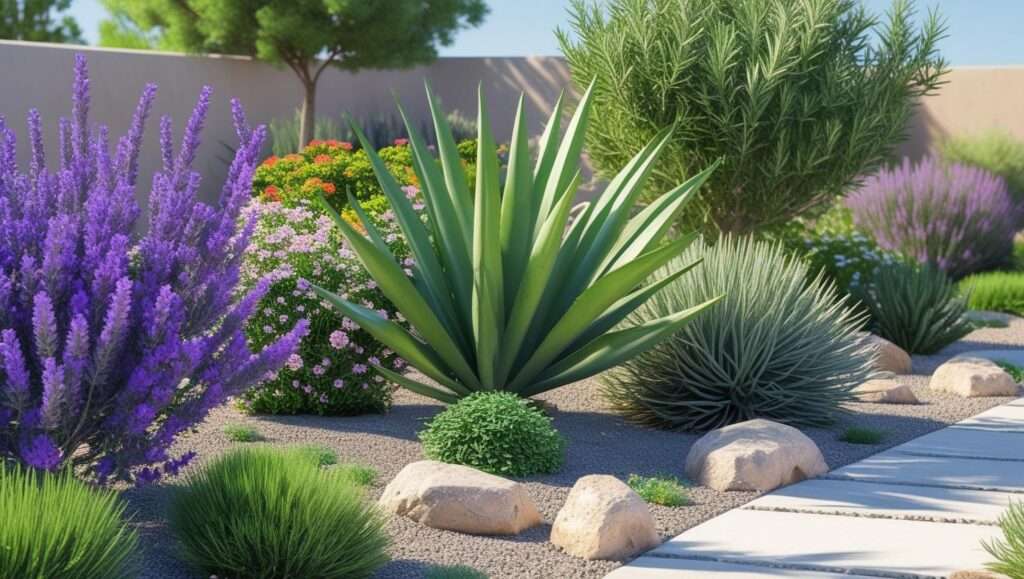
Top 10 Drought Tolerant Shrubs for Water-Saving, Low Maintenance Landscapes
Is your garden struggling to thrive in dry, drought-prone conditions? 🌞 Many gardeners face the frustration of constantly battling water shortages while trying to maintain a vibrant landscape. If you’re tired of using excessive water to keep your plants alive, it’s time to consider drought-tolerant shrubs. These hardy plants are designed to thrive with minimal water, making them the perfect solution for water-saving, low-maintenance gardens. 🌿
In this guide, we’ll introduce you to the top 10 drought-tolerant shrubs that require little upkeep, reduce water usage, and still offer a beautiful, thriving garden. Whether you’re new to gardening or an experienced enthusiast, these shrubs will help you create an eco-friendly, water-efficient landscape. Keep reading to discover the best options for your outdoor space!
Table of Contents
ToggleWhat Are Drought Tolerant Shrubs?
Drought-tolerant shrubs are plants that have evolved to survive in dry conditions with minimal water. 🌵 Unlike regular shrubs that require frequent watering, these plants are designed to thrive in areas with limited rainfall, making them perfect for water-conscious gardeners.
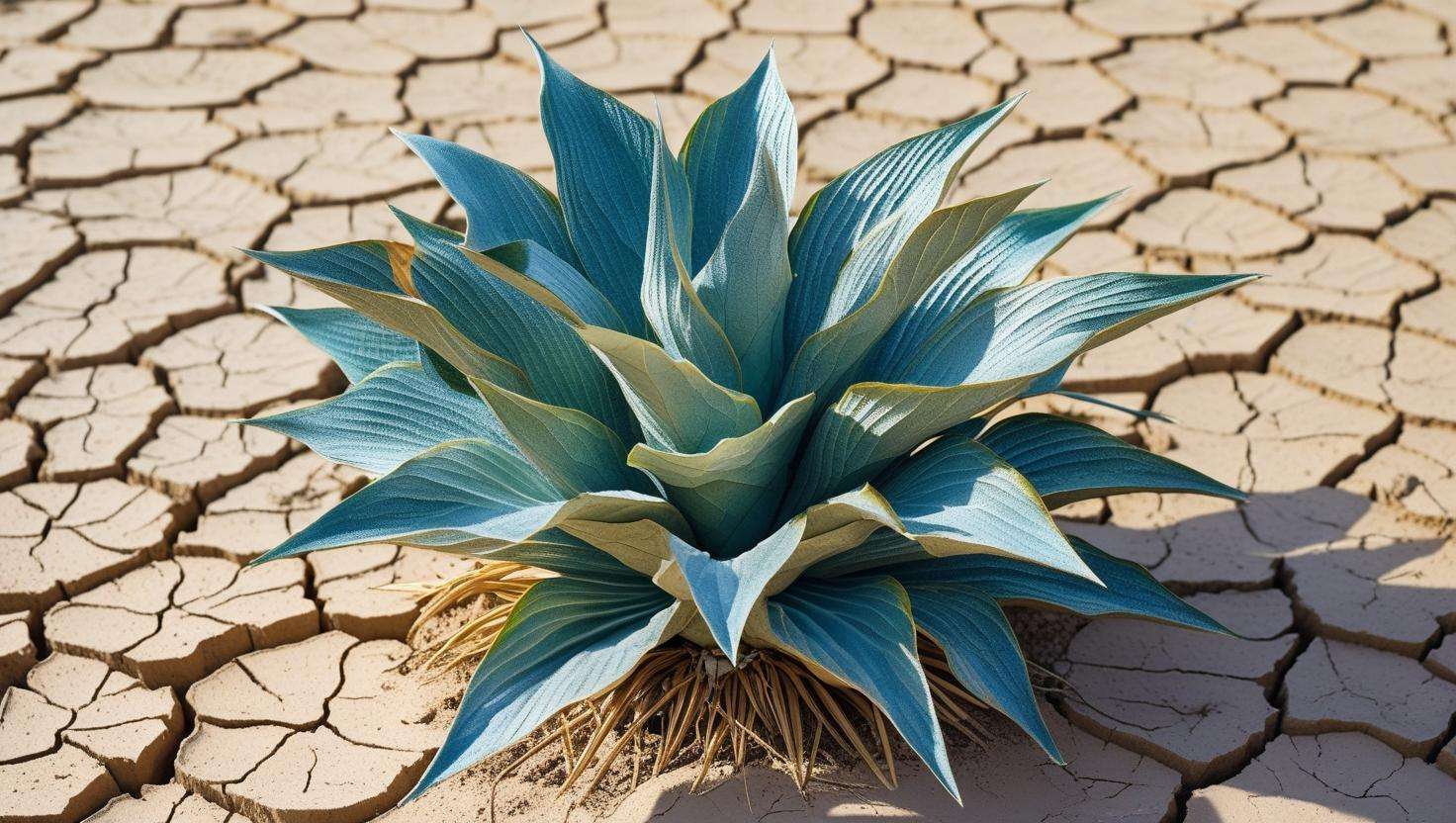
What makes them so resilient? These shrubs have a few key traits that help them conserve water and withstand harsh conditions:
- Deep Root Systems: Many drought-tolerant shrubs grow deep roots that can access water from underground sources. This means they don’t rely on surface watering.
- Waxy or Thick Leaves: Their leaves often have a waxy coating or a thicker structure, which reduces water loss through evaporation.
- Efficient Water Use: These shrubs are highly efficient at using the water they receive, often storing it for later use during dry spells. 🌿
Not only do these plants require less water, but they are also low-maintenance once established. This makes them ideal for anyone looking to reduce water consumption without sacrificing beauty in their garden. Whether you’re in a hot, dry climate or simply want to save on your water bill, drought-tolerant shrubs can provide a sustainable, hassle-free solution. 🌞
With the right selection and care, these shrubs will flourish, helping you create a beautiful landscape that thrives even during the hottest months. Keep reading to discover the best options for your garden!

How to Choose the Right Drought-Tolerant Shrubs for Your Landscape
Selecting the right drought-tolerant shrubs for your landscape can seem overwhelming at first, but with the right approach, it’s easier than you think! Here are some key factors to consider to ensure your shrubs thrive in dry conditions while enhancing your outdoor space. 🌿
1. Consider Your Climate and Region 🌞
Your local climate plays a huge role in determining which shrubs will thrive. Drought-tolerant shrubs are often adapted to specific climates, like arid, Mediterranean, or semi-arid regions. Before making your selection, check your USDA hardiness zone and research which plants are best suited to your area. This ensures your shrubs will not only survive but thrive, even with minimal water.
2. Evaluate Soil Type and Drainage 🌱
Good drainage is essential for drought-tolerant plants. These shrubs prefer soil that drains well and doesn’t hold too much moisture. If your soil tends to stay soggy, consider adding sand or gravel to improve drainage. On the other hand, if you have dry, rocky soil, choose shrubs that naturally thrive in those conditions.
3. Think About Sun Exposure ☀️
Most drought-tolerant shrubs thrive in full sun. They are designed to handle the heat and intense sunlight, so it’s important to plant them in areas that get at least six hours of direct sunlight per day. If your garden has shady spots, look for shrubs that are more tolerant of low light.
4. Size and Growth Habit 🌳
Not all shrubs grow the same way! Some are low-growing groundcovers, while others can reach several feet in height. Be sure to choose shrubs that match the space you have available. Consider both the mature size and growth pattern to avoid overcrowding. Check the plant’s growth habits—some may spread out, while others grow upright, allowing you to create layers of texture in your landscape.
5. Aesthetic Appeal 🎨
Beyond function, your shrubs should add beauty to your garden! Think about the colors, textures, and shapes of the shrubs you choose. Many drought-tolerant varieties offer vibrant flowers, colorful foliage, or interesting bark, providing year-round interest. Choose shrubs that complement the overall design of your garden.
6. Maintenance Requirements 🧑🌾
Drought-tolerant shrubs are generally low-maintenance, but it’s still important to check their specific care needs. Some might need occasional pruning or light fertilization, while others are virtually care-free once established. Make sure the shrub you choose aligns with the amount of time you’re willing to dedicate to maintenance.
By considering these factors, you’ll select shrubs that not only save water but also create a thriving, beautiful landscape with minimal effort. Keep these tips in mind as you browse the top drought-tolerant shrubs for your space! 🌻
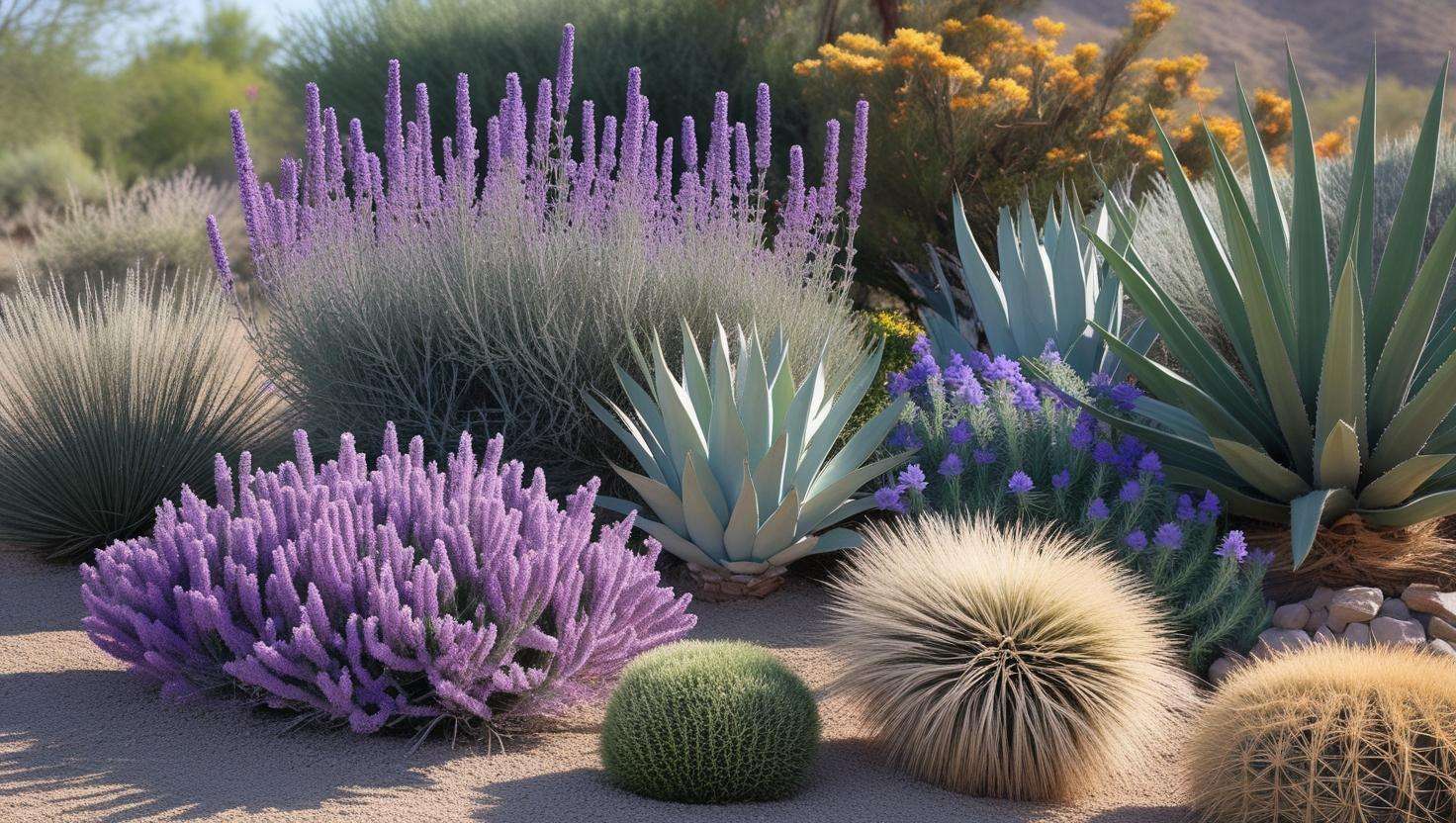
Top 10 Drought Tolerant Shrubs for Low Maintenance, Water-Saving Landscapes
If you’re ready to create a low-maintenance, water-efficient garden, these top 10 drought-tolerant shrubs are a perfect place to start! Each one has been carefully selected for its beauty, resilience, and ability to thrive with minimal water. 🌿
1. Lavender (Lavandula angustifolia) 🌸
- Why It’s Great: Lavender is not only known for its lovely fragrance but also for its stunning purple flowers that attract pollinators like bees and butterflies. It thrives in dry, sunny spots and requires little water once established.
- Best For: Borders, containers, and herb gardens.
- Care Tip: Trim back after flowering to keep it looking tidy.
2. Russian Sage (Perovskia atriplicifolia) 🌾
- Why It’s Great: This shrub is perfect for adding height and drama to your garden with its silvery stems and vibrant purple blooms. It’s heat-tolerant and can survive on minimal water, making it an excellent choice for dry landscapes.
- Best For: Back of flower beds and xeriscaping.
- Care Tip: Prune in early spring to encourage new growth.
3. Boxwood (Buxus spp.) 🌳
- Why It’s Great: A classic evergreen shrub, Boxwood provides structure and elegance to any garden. It tolerates drought conditions and works well in a variety of soil types.
- Best For: Hedges, topiaries, and formal garden designs.
- Care Tip: Trim regularly to maintain shape and density.
4. Butterfly Bush (Buddleja davidii) 🦋
- Why It’s Great: With its long-lasting, colorful blooms, the Butterfly Bush is a favorite for attracting butterflies and hummingbirds. It thrives in full sun and requires little water once established.
- Best For: Pollinator gardens and sunny spots.
- Care Tip: Cut back to the ground in early spring to encourage robust growth.
5. Spirea (Spiraea spp.) 🌸
- Why It’s Great: Spirea is an easy-to-grow shrub with showy white to pink flowers. It can tolerate drought once established and offers beautiful seasonal color.
- Best For: Shrub borders, mass plantings, and erosion control.
- Care Tip: Light pruning after blooming keeps it neat.
6. Red-Twig Dogwood (Cornus sericea) 🌳
- Why It’s Great: Known for its striking red stems in winter, the Red-Twig Dogwood is an attractive choice for all-year interest. It tolerates dry conditions and poor soil, making it a versatile shrub for various landscapes.
- Best For: Wetland areas, borders, and as a focal point.
- Care Tip: Prune older stems every few years to promote new growth.
7. Yucca (Yucca filamentosa) 🌵
- Why It’s Great: Yucca is a bold, architectural shrub with spiky leaves and dramatic flower stalks. It thrives in hot, dry conditions and requires very little water once established.
- Best For: Desert landscapes, xeriscaping, and containers.
- Care Tip: Minimal pruning needed; just remove spent flower stalks.
8. Texas Ranger (Leucophyllum frutescens) 🌺
- Why It’s Great: With its striking purple or pink flowers and silvery leaves, Texas Ranger is perfect for hot, dry climates. It can handle long stretches of heat with minimal water.
- Best For: Borders, rock gardens, and dry slopes.
- Care Tip: Prune lightly after flowering to maintain shape.
9. Manzanita (Arctostaphylos spp.) 🌿
- Why It’s Great: Manzanita is an evergreen shrub with stunning red bark and clusters of pink or white flowers. It thrives in poor, dry soils and is perfect for Mediterranean climates.
- Best For: Xeriscaping, coastal gardens, and natural landscapes.
- Care Tip: Prefers well-drained soil, so avoid overwatering.
10. Pomegranate (Punica granatum) 🍊
- Why It’s Great: Pomegranate shrubs are not only drought-tolerant but also produce beautiful red flowers and edible fruit! They thrive in hot, dry conditions and are ideal for adding both beauty and function to your garden.
- Best For: Mediterranean gardens, edible landscapes, and fruit gardens.
- Care Tip: Prune to maintain shape and encourage fruiting.
These 10 drought-tolerant shrubs are perfect for anyone looking to reduce water usage while enhancing their landscape. From vibrant flowers to evergreen beauty, each of these plants will thrive with minimal care, allowing you to enjoy a low-maintenance garden that’s as beautiful as it is sustainable! 🌻
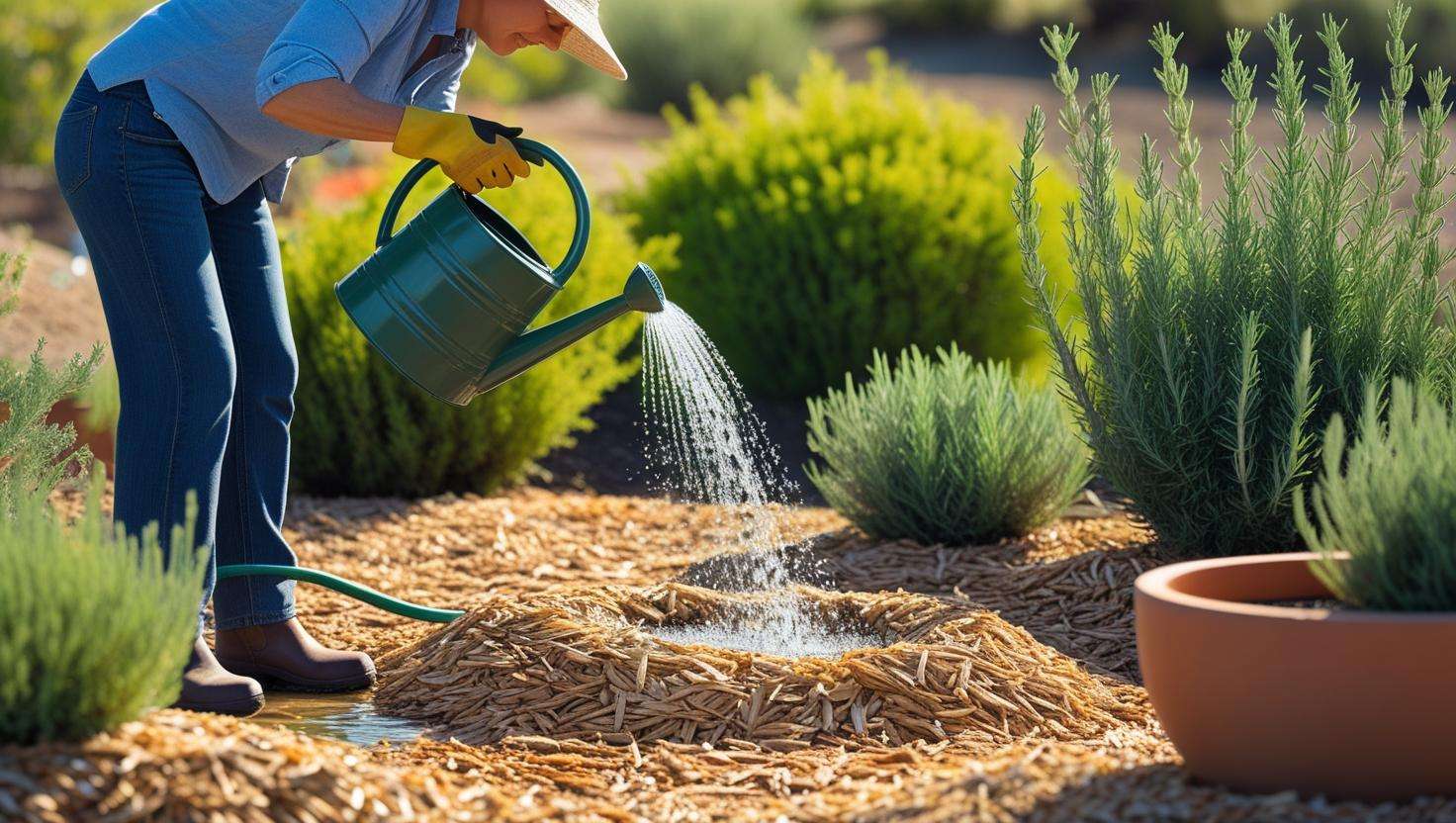
How to Care for Drought-Tolerant Shrubs
Once you’ve selected the perfect drought-tolerant shrubs for your garden, the next step is providing the right care to help them thrive. Luckily, these plants are designed to need less maintenance than traditional shrubs, but a little attention goes a long way! 🌱
1. Watering: Less Is More 💧
While drought-tolerant shrubs are great at conserving water, they still need some attention, especially during the first year after planting. Here’s the best approach:
- Initial Watering: Water your new shrubs thoroughly after planting to help establish their roots. During the first few months, water deeply once a week, or more often if the soil is very dry.
- Once Established: After the shrubs are established (usually after 1–2 years), reduce watering. In most cases, deep watering once every 2–4 weeks is sufficient, depending on rainfall and climate.
2. Pruning: Keep It Neat ✂️
Pruning helps maintain your shrubs’ shape, encourage growth, and remove dead or damaged stems. Most drought-tolerant shrubs only need light pruning:
- When to Prune: Prune in early spring before new growth begins or after the plant finishes blooming.
- How to Prune: Trim dead or crossing branches to improve air circulation and shape. For flowering shrubs, prune just after they finish blooming to encourage the next round of flowers.
3. Mulching: Protect the Roots 🌾
Mulching is essential for drought-tolerant shrubs because it helps retain moisture and keeps weeds at bay. Use an organic mulch like wood chips, bark, or straw:
- How to Apply: Spread a 2–3 inch layer of mulch around the base of your shrub, leaving a small gap around the stem to prevent rot.
- Benefits: Mulch insulates the soil, preventing rapid temperature fluctuations, and helps reduce the need for frequent watering.
4. Fertilizing: Keep It Simple 🌿
Drought-tolerant shrubs don’t require much fertilization. In fact, over-fertilizing can harm them by encouraging too much foliage growth, which can make the plants more vulnerable to pests and diseases.
- When to Fertilize: If you feel your shrubs need a boost, fertilize once a year in the spring with a balanced, slow-release fertilizer.
- How Much to Apply: Use only a light amount of fertilizer, as these shrubs are adapted to thrive in poor soils.
5. Soil Care: Well-Draining is Key 🌍
Proper soil drainage is essential for drought-tolerant shrubs. While they’re designed to handle dry conditions, soggy soil can lead to root rot.
- How to Test Soil: Check your soil’s drainage by digging a hole and filling it with water. If it drains quickly, your soil is well-draining. If it retains water for hours, consider improving drainage with sand or gravel.
- When to Amend Soil: If you have heavy or clay-like soil, amend it with organic matter to improve structure and drainage.
6. Protecting Against Pests 🦋
Though drought-tolerant shrubs are generally resistant to pests, occasional issues may arise. Look out for common garden pests like aphids, spider mites, and scale insects.
- How to Handle Pests: Regularly inspect your plants for pests. If you notice any, remove them by hand or spray with a mild insecticidal soap.
- Preventative Measures: Healthy shrubs are less prone to pests, so proper watering, pruning, and soil care will naturally reduce the likelihood of infestations.
7. Winter Care: Prepare for the Cold ❄️
Even drought-tolerant shrubs need some extra protection in colder climates.
- How to Prepare: Apply a thick layer of mulch around the base of your shrubs before the first frost to help insulate the roots. For shrubs that may be sensitive to freezing, consider wrapping them in burlap to protect them from harsh winds and cold temperatures.
By following these simple care tips, your drought-tolerant shrubs will flourish with minimal effort. These plants are not only low-maintenance but also contribute to a sustainable, water-efficient garden. 🌿 So, enjoy your beautiful, thriving landscape without the constant worry about watering!
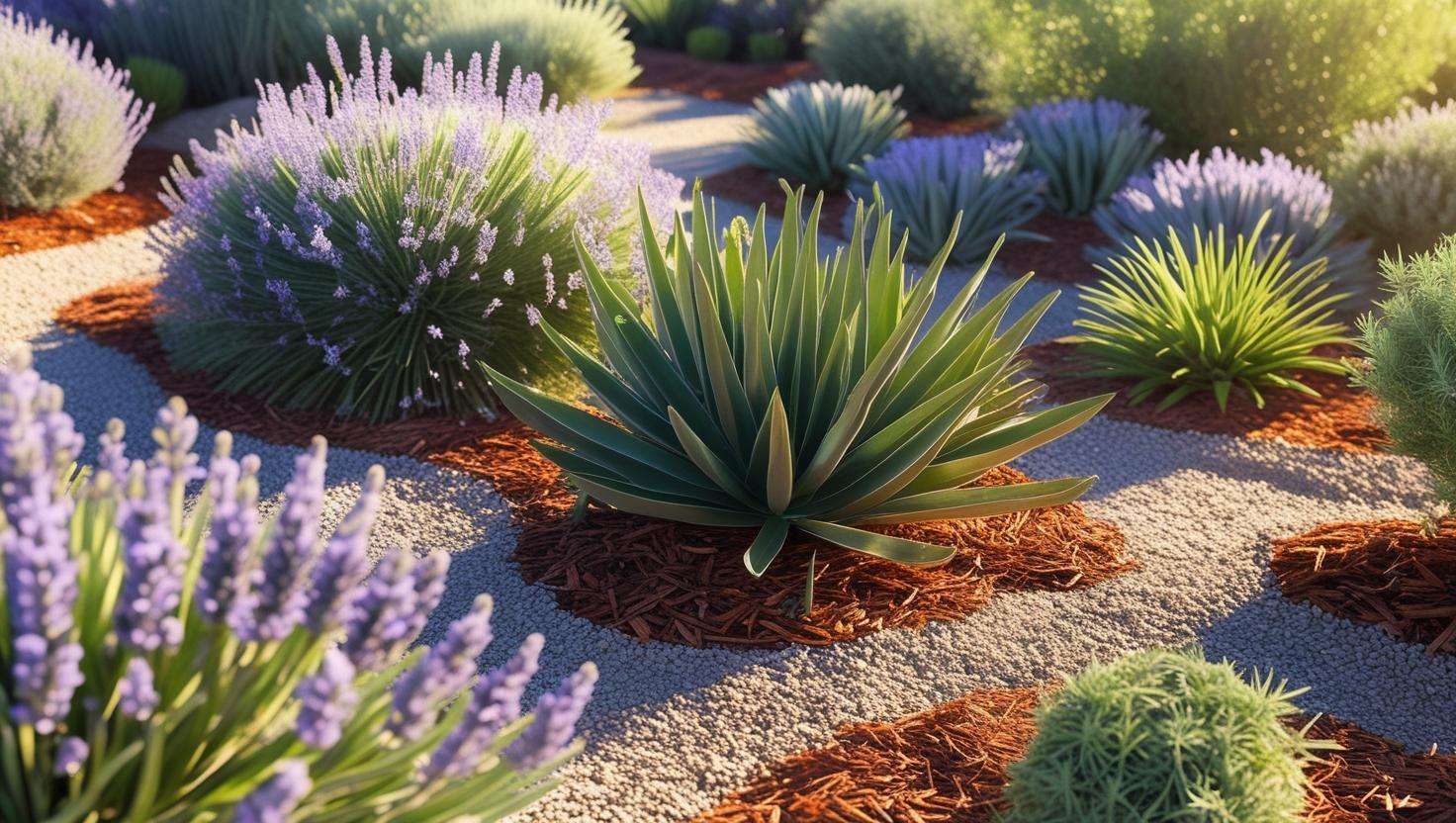
Landscaping Ideas for Drought-Tolerant Shrubs
Drought-tolerant shrubs aren’t just practical—they can also elevate the aesthetic of your garden. Whether you want a sleek, modern design or a natural, wild look, these hardy plants offer endless landscaping possibilities. Here are some creative ideas to help you incorporate them into your outdoor space while conserving water and reducing maintenance. 🌿
1. Create a Xeriscape Garden 🌵
A xeriscape garden is designed to minimize water usage by using drought-tolerant plants, efficient irrigation, and water-conserving landscaping techniques. Drought-tolerant shrubs are the backbone of any xeriscaping project. Combine them with succulents, grasses, and hardy ground covers to create a beautiful, water-efficient garden that requires minimal upkeep.
- Design Tip: Group plants with similar water needs together and create sections or “zones” for different plants to thrive.
2. Use Shrubs for Erosion Control 🏞️
Drought-tolerant shrubs are perfect for sloping areas or hills where erosion is a concern. Their deep root systems help stabilize the soil, preventing runoff and soil loss, especially in dry regions where heavy rainfall can cause erosion.
- Design Tip: Choose spreading varieties like Spirea or Manzanita, which help cover large areas and reduce erosion naturally.
3. Add Texture with Layered Shrubs 🌱
Create visual interest by layering different heights and textures of drought-tolerant shrubs. For example, place shorter shrubs like Lavender or Yucca in the front, and taller varieties like Russian Sage or Red-Twig Dogwood towards the back.
- Design Tip: Mixing different textures (like the spiky leaves of Yucca and the feathery foliage of Russian Sage) will add depth and dimension to your landscape.
4. Design a Wildlife-Friendly Garden 🦋
Drought-tolerant shrubs not only conserve water but also attract wildlife, creating a thriving ecosystem. Shrubs like Butterfly Bush and Texas Ranger attract pollinators like bees and butterflies, while others like Boxwood provide shelter for birds.
- Design Tip: Include a mix of flowering and berry-producing shrubs to attract a variety of animals, from pollinators to small wildlife.
5. Create Focal Points with Bold Shrubs 🌸
Want to add some drama to your garden? Use bold, statement-making drought-tolerant shrubs as focal points. Varieties like Pomegranate or Yucca can provide stunning visual appeal with their vibrant flowers or striking architectural shapes.
- Design Tip: Position these bold shrubs in the center or at key focal points in your garden to create a stunning impact.
6. Integrate Shrubs Into Pathways and Borders 🌿
Drought-tolerant shrubs make fantastic border plants along walkways or as edges for garden beds. They create a defined, structured look while requiring minimal watering. Spirea and Lavender are perfect choices for these areas due to their compact growth and beautiful blooms.
- Design Tip: Line your pathways with shorter shrubs for a neat, uniform look, or let taller varieties form natural hedges that guide the eye through the garden.
7. Incorporate Containers for Flexibility 🌼
If you’re working with a small space or want to add some greenery to patios or balconies, drought-tolerant shrubs are ideal for containers. Many varieties, like Lavender and Yucca, thrive in pots and can easily be moved around to suit your garden’s changing needs.
- Design Tip: Choose plants that complement your overall garden design. Containers can be placed on patios, near doorways, or as accents to add visual appeal while being easy to maintain.
By incorporating drought-tolerant shrubs into your landscape, you’ll not only save water but also create a garden that’s beautiful, sustainable, and easy to care for. Whether you’re designing a low-maintenance xeriscape, attracting pollinators, or simply adding texture and visual interest, these shrubs are versatile enough to meet your needs. 🌞🌻
Take inspiration from these ideas and start creating your own water-efficient oasis today!

Conclusion
Drought-tolerant shrubs are the perfect solution for anyone looking to create a low-maintenance, water-efficient garden without sacrificing beauty. 🌿 By choosing the right shrubs for your climate, soil, and aesthetic preferences, you can design a stunning landscape that thrives with minimal effort and resources.
From vibrant flowers to evergreen structure, these shrubs offer year-round appeal, reduce your water usage, and save you time on maintenance. Whether you’re looking to xeriscape, control erosion, or simply add color and texture, there’s a drought-tolerant shrub that can meet your needs.
With the tips and ideas shared in this guide, you’re now equipped to transform your outdoor space into a sustainable, beautiful oasis. 🌞 So, why not take the first step today and start planting the shrubs that will make your garden flourish—while helping the environment and saving on water costs? Happy gardening! 🌻
Frequently Asked Questions (FAQs)
1. What are drought-tolerant shrubs?
Drought-tolerant shrubs are plants that can survive with minimal water once established. They have special adaptations like deep roots and water-conserving leaves that allow them to thrive in dry conditions. These shrubs are ideal for gardens in areas with limited rainfall or for gardeners looking to reduce water usage. 🌿
2. Why should I plant drought-tolerant shrubs in my garden?
Planting drought-tolerant shrubs helps conserve water, reduce maintenance, and lower your water bill. These shrubs are perfect for hot, dry climates and can thrive with minimal care, saving you time and effort in the garden. They also enhance the beauty of your landscape while being eco-friendly. 🌱
3. How do I know if a shrub is drought-tolerant?
Drought-tolerant shrubs are usually adapted to dry climates and have certain characteristics like deep root systems, waxy or thick leaves, and the ability to store water. When choosing plants, look for varieties labeled as “drought-tolerant” or check their water requirements on plant tags or online resources. 🌞
4. How often should I water drought-tolerant shrubs?
Once established, drought-tolerant shrubs require very little water—usually just a deep watering every 2–4 weeks, depending on the climate. Watering too often can harm them, so it’s important to let the soil dry out between waterings. During the first year, regular watering is necessary to help the roots establish. 💧
5. Can drought-tolerant shrubs survive in all climates?
Drought-tolerant shrubs are best suited for regions with hot, dry summers and mild winters. They are especially well-suited for Mediterranean, arid, or semi-arid climates. However, it’s important to choose shrubs that are specifically adapted to your local climate zone to ensure they thrive. 🌍
6. What are the best drought-tolerant shrubs for sunny areas?
Shrubs like Lavender, Russian Sage, and Yucca thrive in full sun and hot, dry conditions. These plants love the heat and can handle direct sunlight for several hours each day, making them ideal for sunny, drought-prone landscapes. ☀️
7. How do I care for drought-tolerant shrubs during the winter?
Most drought-tolerant shrubs are hardy and can survive through winter with little care. However, in colder climates, applying a layer of mulch around the base of the shrubs can help protect the roots from freezing temperatures. Also, prune any dead or damaged growth to prepare for the next growing season. ❄️
8. Do drought-tolerant shrubs need fertilizing?
Drought-tolerant shrubs typically require minimal fertilizing. Over-fertilizing can encourage excessive growth, making the shrubs more susceptible to pests and diseases. Apply a light dose of slow-release fertilizer once a year, preferably in early spring, to encourage healthy growth without overdoing it. 🌸
